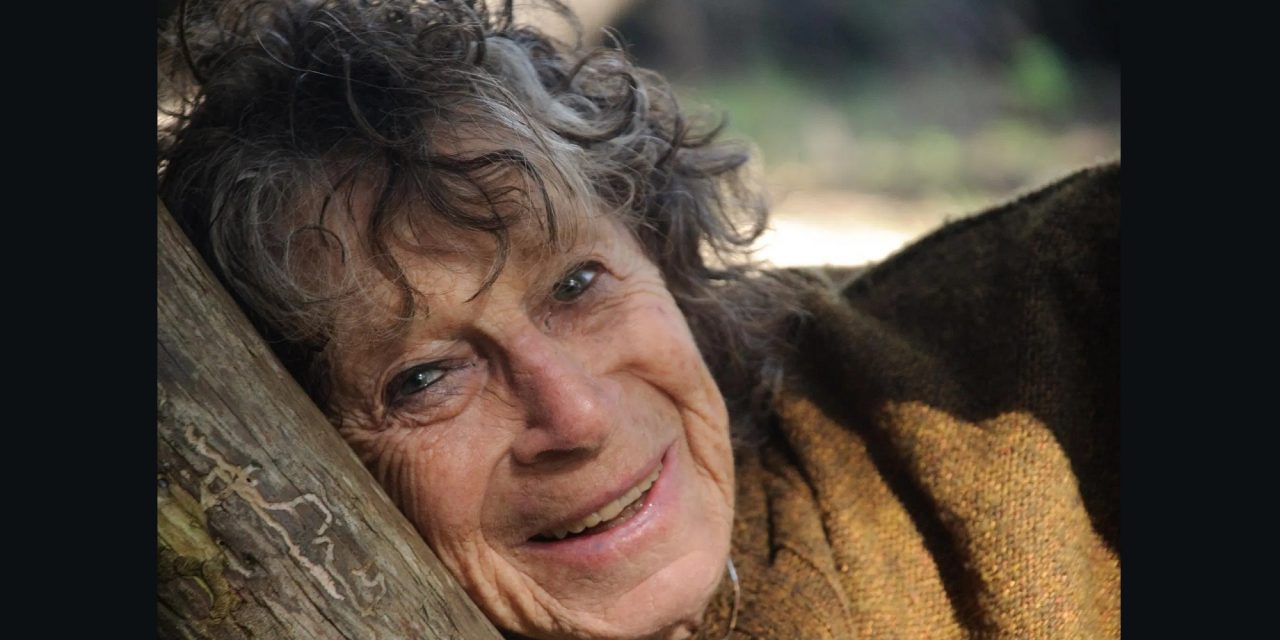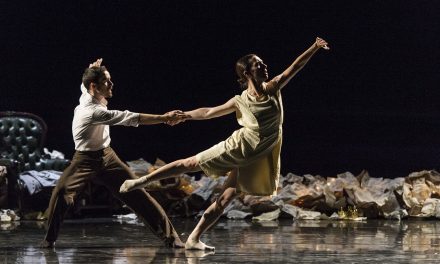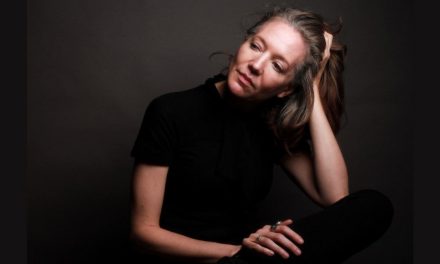“I want to integrate life and art so that as our art expands our life deepens and as our life deepens our art expands.”.” – Anna Halprin
“…one of the most important and original thinkers in performance.” — Richard Schechner, editor of TDR: The Drama Review
“What she’s done…is a very strong part of dance history.” – Merce Cunningham
Anna Halprin (July 13, 1920-May 24, 2021) began creating dances in the late 1930s and from the onset she was breaking barriers, inspiring artists from all genres, and instilling the love of moving in all people – not just dancers – around the world. Her students Trisha Brown, Yvonne Rainer, and Simone Forti who worked with the Judson Church Dance Theater, were choreographic pillars of the postmodern dance era in New York City. Among the innovative and ground breaking musicians Halprin collaborated with were Terry Riley, LaMonte Young, Morton Subotnik, and Luciano Berio, as well as poets Richard Brautigan, James Broughton, and Michael McClure. The list of artists who studied with Halprin is long and lustrous. A few include Robert Morris, Chip Lord, Meredith Monk, Eiko and Koma, Wanda Coleman, Janine Antoni, Carrie Mae Weems, Theresa Hak Kyung Cha, Dohee Lee, and Dana and Shinichi Iova-Koga.
Halprin and her husband, landscape architect Lawrence Halprin relocated to northern California following World War II. She had already experienced a wonderful dance career in New York and was ready to start a family. Dance, however, was not finished with Halprin. In 1952 her husband built a dance deck where Halprin began developing her famous dance movement and ideas, ideas that over the years became the inspiration for other postmodern dancers. She included dancers, children, urban environments, voice, dialogue, and multimedia in her dance theater.
It was during this time that Halprin created her performance company, The Dancers Workshop Company which went on to tour nationally and internationally for 20 years. The original company included A.A. Leath, John Graham, Halprin’s two daughters Daria and Rana, and designers Joe Landor and Patrick Hickey. She also launched the Marin Children’s Dance Co-Op through which countless children and their families learned Halprin’s creative methods.
Through her art, Halprin was a social and environmental activist addressing social issues, building community, incorporating dance to foster physical and emotional healing, and helping to reconnect people with nature. In the 1960’s Halprin presented “Ceremony of Us”, a collaborative performance between two dance groups, one all-black and the other all-white.
In the 1970’s Halprin utilized her methods of healing through movement to help herself recover from cancer, as well as helping other cancer patients and people with AIDS to heal. Through this process and using the healing methods that she had developed, Halprin and her daughter Daria co-founded the Tamalpa Institute in 1978 to help people around the world heal and find peace. It would be a life long project and one that is said to have been close to her heart.
During the 1960s and 1970s Anna and Lawrence Halprin brought together dancers, architects, and other artists via a series of workshops they called “Experiments in the Environment” to explore creating art in relation to the environment. One of the international events that Halprin organized was in 1995 when more than 400 participants joined her in Berlin for what she called a Planetary Dance to commemorate the 50th Anniversary of the signing of the Potsdam Agreements which took place at the end of World War II. Halprin took that same dance more recently to Israel during which she brought together people from Israel, Palestine and other nationalities.
Over Halprin’s long and momentous career, she created more than 150 dance theater works, authored three books, developed the performance Intensive Care: Reflections on Death and Dying (2000), and worked with her own community in Northern California to create Seniors Rocking (2005). The latter involved over 50 elderly people, Halprin included, performing outdoors in rocking chairs. To honor her late husband who died in 2009 at the age of 93, Halprin created a site-specific trilogy which included Spirit of Place performed in an outdoor theater that Lawrence Halprin had designed. For her 95th birthday in July of 2015, she passed along her love of dance to her grandson Jahan Khalighi in a poetic duet.
Films about Halprin’s work include Andy Abrahams Wilson’s award-winning film Returning Home and Ruedi Gerber produced the acclaimed Breath Made Visible. She was named one of “America’s irreplaceable dance treasures” by the Dance Heritage Coalition and in 2006, Halprin was given a solo exhibition at Lyon’s Museum of Contemporary Art, an exhibition which traveled to San Francisco’s Yerba Buena Center for the arts, and the UC, Santa Barbara’s art museum. The Anna Halprin Digital Archive is housed in The Museum of Performance & Design in San Francisco, with additional materials in the Anna Halprin Papers at the Jerome Robbins Dance Division at the New York Public Library for the Performing Arts.
The goddess of Terpsichore has called Anna Halprin home and she will be missed by many around the world. Her legacy, however, lives on in the minds and bodies of those who worked and studied with her. Dance changed and expanded because of Anna Halprin, and those of us who saw her perform will never forget the joy of moving that flowed through every fiber of her being.
Awards
2015 Dances for Anna and 95 Rituals (for Anna Halprin), worldwide festivities; 2014 Doris Duke Impact Award, Isadora Duncan Award for Parades and Changes at Berkeley Art Museum; 2010 Fulbright Specialist in Israel, San Francisco Foundation Community Leadership Award, Officer of the Order of Arts and Letters from France, and New Trier High School Alumni Achievement Award; 2008 NEFA NEA American Masterpieces award for collaboration with Anne Collod on Parades and Changes, Replay; 2007 Heart of Marin Award, USA Rasmusson Fellow, and California Pacific Medical Center Pioneer Award in Art, Science and Soul of Healing; 2006 Dance USA Honor Award; 2005 Association of Theater Movement Educators Lifetime Achievement Award, Congress on Research in Dance Award for Outstanding Leadership in Dance Research; 2004 Dance Magazine award, and Honorary doctorate from CalArts; 2003 Named one of America’s 100 Irreplaceable Dance Treasures by Dance Heritage Coalition, Honorary doctorate from San Francisco Art Institute; 2002 Honorary doctorates from Sierra University and Santa Clara University; 2001 California Arts Council Lifetime Achievement Award, and Marin Breast Cancer Watch Lifetime Achievement Award; 2000 International Expressive Arts therapy Association Shining Star Award; 1998 Cyril Magnin Award for Outstanding Achievement in the Arts; 1997 Samuel Scripps American Dance Festival Award for Lifetime Achievement, and Isadora Duncan Award for Individual Performance; 1996 Balasaraswati/Joy Ann Dewey Beinecke Endowed Chair for Distinguished Teaching from American Dance Festival; 1995 Anna Halprin Day (June 2) proclaimed in San Francisco by Mayor Frank Jordan; 1993 Marin Arts Council Award for individual contribution to the arts of Marin; 1991 WAVE, Women of Achievement and Excellence, award; 1990 Goldie Award for Lifetime Achievement from San Francisco Bay Guardian, and Honorary doctorate from University of Wisconsin; 1988 West Coast Outstanding Teacher of the Year Award; 1987 Professional Women’s Association Women of Wisdom Award; 1985 Bay Area Dance Coalition Isadora Hall of Fame Award; 1980 American Dance Guild Award; Halprin also received Guggenheim Fellowship (1970) and multiple National Endowment for the Arts Choreographer Fellowships.
To learn more about the incredible Anna Halprin, please visit her website HERE.
Trailer for Ruedi Gerber’s film Breath Made Visible
Written by Jeff Slayton for LA Dance Chronicle.
Featured image: Anna Halprin – Photo from the web.








